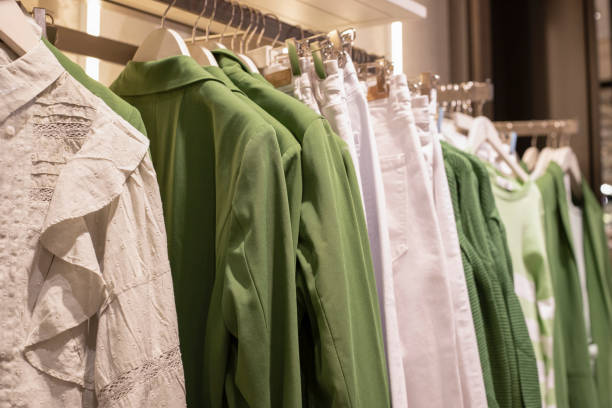The journey of sustainable fashion, from its initial inception to its current evolution, is a story of innovation, awareness, and transformation. This article explores the history, advancements, and impact of sustainable fashion, shedding light on how it evolved from a niche concept to a mainstream movement.
The Birth of Sustainable Fashion

The concept of sustainable fashion first emerged in the late 20th century as a response to the growing environmental and social concerns triggered by the conventional fashion industry. With the rise of fast fashion, the 1980s and 1990s saw an unsustainable demand for rapid production and consumption, leading to severe environmental degradation and unfair labor practices. Visionaries and activists began advocating for fashion that would harmonize with nature and uphold ethical standards. They emphasized the importance of using eco-friendly materials, reducing waste, and ensuring fair wages and safe working conditions for garment workers.
Key Pillars of Sustainable Fashion
Sustainable fashion is built on several key pillars that ensure its integrity and effectiveness. These include:
- Eco-friendly materials: Utilizing organic, recycled, or sustainably sourced fibers to reduce environmental impact.
- Ethical production: Ensuring fair labor practices, safe working conditions, and fair wages for all workers in the supply chain.
- Waste reduction: Minimizing waste through methods such as upcycling, recycling, and designing for longevity.
- Energy efficiency: Adopting energy-efficient processes and renewable energy sources in production facilities.
- Transparency: Providing consumers with information about the sourcing, production, and impact of fashion products.
Each of these pillars contributes to the overall mission of sustainable fashion by addressing both environmental and social issues.
The Evolution of Sustainable Fashion
Over the years, sustainable fashion has evolved from a niche initiative to a burgeoning industry driven by consumer demand and technological advancements. In the early 2000s, eco-friendly fashion began to gain traction as designers and brands increasingly embraced sustainable practices. Organizations such as the Ethical Fashion Forum and Fashion Revolution played pivotal roles in raising awareness and promoting ethical fashion. Technological advancements have also contributed to this evolution. Innovations in fabric production, such as the development of biodegradable fibers and the use of 3D printing, have revolutionized the way sustainable fashion is designed and manufactured. Moreover, the rise of social media has empowered consumers to demand greater transparency and accountability from fashion brands.
The Role of Social Media and Influencers
Social media platforms have played an instrumental role in giving a voice to sustainable fashion advocates and influencing consumer behavior. Influencers and activists have leveraged these platforms to educate the public about the environmental and social impact of fast fashion, driving a shift towards more conscious consumption. Through campaigns such as #WhoMadeMyClothes, consumers have been encouraged to ask questions and seek transparency from brands, ultimately pushing the industry towards more ethical practices. Influencers have also collaborated with sustainable brands to promote eco-friendly products, demonstrating that fashion can be both stylish and sustainable.
The Future of Sustainable Fashion
As we look to the future, the sustainable fashion industry is poised for continued growth and innovation. Emerging trends such as circular fashion, which focuses on designing clothes for longevity and recyclability, are gaining momentum. There is also a growing emphasis on slow fashion, which advocates for quality over quantity and encourages consumers to invest in timeless, durable pieces. The industry is also exploring new business models, such as rental and resale platforms, which extend the lifecycle of garments and reduce waste. Additionally, policymakers and international organizations are increasingly recognizing the importance of sustainable fashion and are working on regulations and initiatives to support it. With continued consumer support and industry collaboration, sustainable fashion holds the promise of transforming the way we produce and consume clothing.
Conclusion
The journey of sustainable fashion is far from over, but significant strides have been made since its inception. From pioneering efforts to mainstream movements, sustainable fashion continues to evolve, driven by innovation, consumer demand, and a collective commitment to a more ethical and environmentally-friendly industry. By embracing sustainable practices and supporting responsible brands, we can all contribute to a more sustainable future for fashion.
FAQs
What is sustainable fashion?
Sustainable fashion refers to clothing, accessories, and footwear that are produced in a manner that is environmentally and socially responsible, focusing on reducing environmental impact and ensuring fair labor practices.
Why is sustainable fashion important?
Sustainable fashion addresses critical issues such as environmental degradation, climate change, and unethical labor practices, promoting a more responsible and ethical approach to fashion consumption and production.
What are some examples of eco-friendly materials used in sustainable fashion?
Examples of eco-friendly materials include organic cotton, recycled polyester, hemp, bamboo, and Tencel, which are produced with lower environmental impact and often have better biodegradability.
How can consumers support sustainable fashion?
Consumers can support sustainable fashion by purchasing from ethical brands, choosing quality over quantity, opting for second-hand or recycled clothing, and being mindful of the environmental and social impact of their fashion choices.
What are some challenges faced by the sustainable fashion industry?
The sustainable fashion industry faces challenges such as higher production costs, limited consumer awareness, scalability issues, and the need for greater transparency within supply chains. However, ongoing innovations and growing consumer demand are helping to overcome these challenges.



